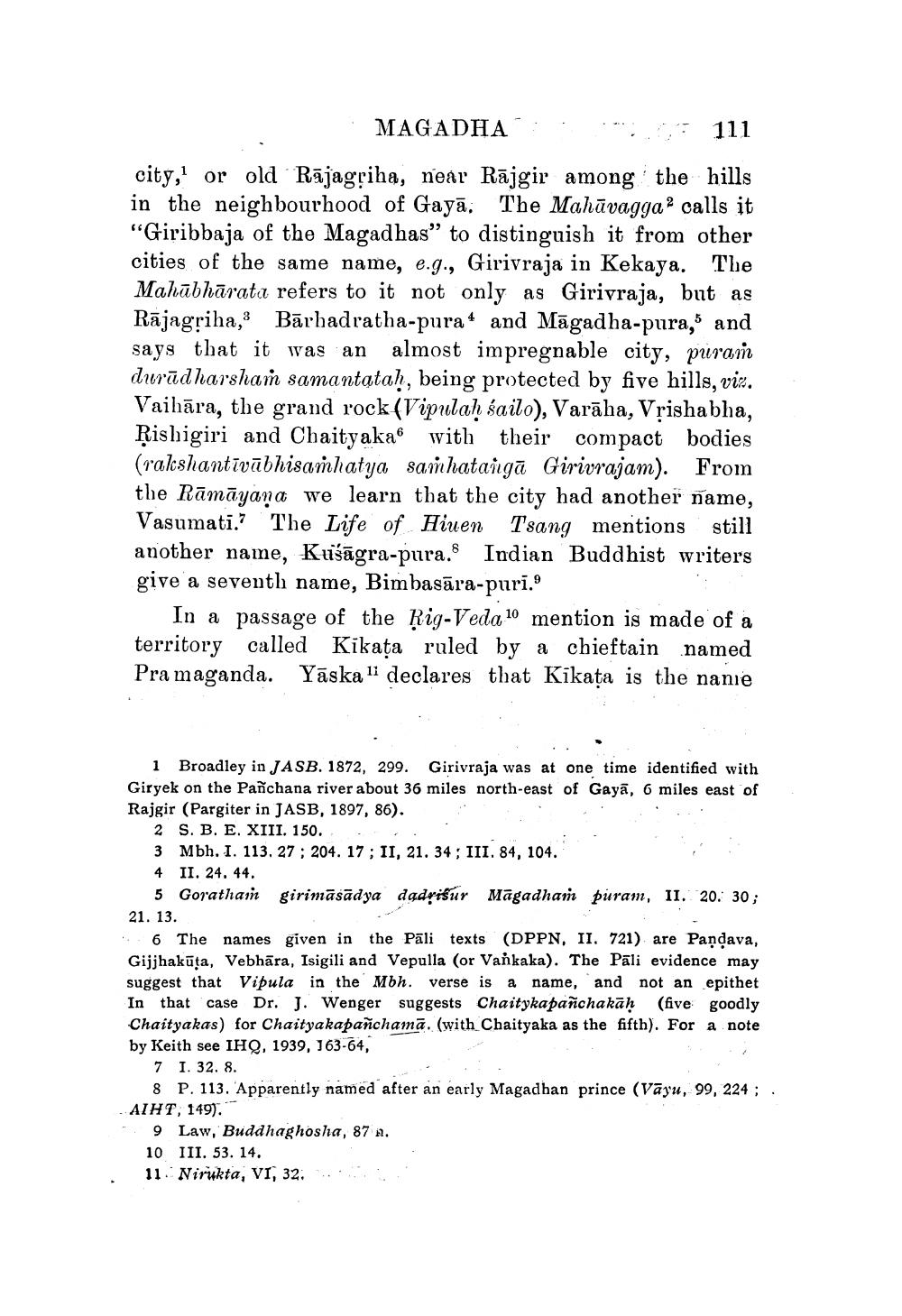________________
MAGADHA:
111 city, or old Rājagriha, near Rājgir among the hills in the neighbourhood of Gayā. The Mahāvagga? calls it "Giribbaja of the Magadhas" to distinguish it from other cities of the same name, e.g., Girivraja in Kekaya. The Mahābhārata refers to it not only as Girivraja, but as Rājagriha, Bārbadratha-pura+ and Māgadha-pura, and says that it was an almost impregnable city, puram durūdharshain samantatah, being protected by five hills, viz. Vaihāra, the grand rock (Vipulah sailo), Varāha, Vrishabha, Rishigiri and Chaityaka with their compact bodies (rakshantīvābhisamhatya samhataigā Girivrajam). From the Rāmāyana we learn that the city had another name, Vasumati. The Life of Hiuen Tsang mentions still another name, Kušāgra-pura. Indian Buddhist writers give a seventh name, Bimbasāra-puri.
In a passage of the Rig Veda 10 mention is made of a territory called Kikața ruled by a chieftain named Pra maganda. Yāskall declares that Kikata is the nanie
1 Broadley in JASB. 1872, 299. Girivraja was at one time identified with Giryek on the Panchana river about 36 miles north-east of Gayā, 6 miles east of Rajgir (Pargiter in JASB, 1897, 86).
2 S. B. E. XIII. 150.. . . . 3 Mbh. I. 113, 27; 204. 17; 11, 21. 34; III. 84, 104. 4 II. 24. 44.
5 Goratham girimāsādya dadrißur Māgadham puram, II. 20. 30; 21. 13.
6 The names given in the Pāli texts (DPPN, II. 721) are Pandava, Gijjhakūta, Vebhāra, Isigili and Vepulla (or Vankaka). The Pāli evidence may suggest that Vipula in the Mbh. verse is a name, and not an epithet In that case Dr. J. Wenger suggests Chaitykapanchakāḥ (five goodly Chaityakas) for Chaityakapanchamā. (with Chaityaka as the fifth). For a note by Keith see IHQ, 1939, 163-64,
7 I. 32. 8.
8 P. 113. Apparently named after an early Magadhan prince (Vāyu, 99, 224 ; . AIHT, 149).
9 Law, Buddhaghosha, 87 n. 10 III. 53. 14. 11. Nirukta, VI, 32. .




